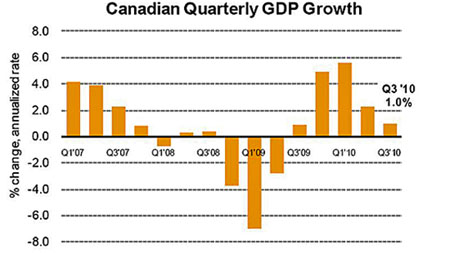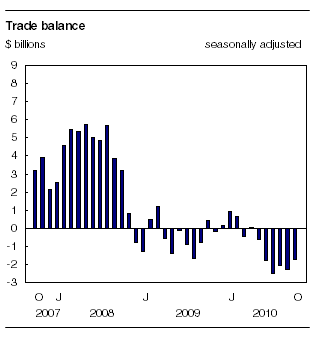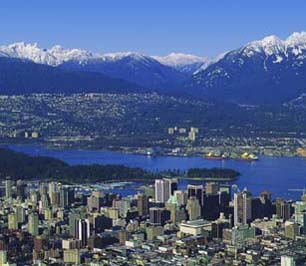What’s going on with the Canadian economy (does anyone really know)?
Jan 11th, 2011 | By L. Frank Bunting | Category: Key Current Issues It is probably quite politically clever that “Conservative MPs will soon be asking their constituents for advice on what to do about the economy … Prime Minister Stephen Harper has sent a letter to the Tory caucus asking each MP to proactively seek out ideas on the next phase of the government’s economic action plan.”
It is probably quite politically clever that “Conservative MPs will soon be asking their constituents for advice on what to do about the economy … Prime Minister Stephen Harper has sent a letter to the Tory caucus asking each MP to proactively seek out ideas on the next phase of the government’s economic action plan.”
As deep background here, the always vaguely dodgy notion that smart “Tory planning” has somehow enabled the Canadian economy to escape the worst downturn since the Great Depression of the 1930s has been wearing a little thinner than usual lately.
 A recent report from “economist Jim Stanford of the Canadian Auto Workers paints a far different picture … from what politicians, and indeed some private sector economists, have been telling Canadians for most of the past year.” During the second and third quarters of 2010 (April to September) the Canadian economy grew more slowly than any other of the old G7 advanced economies except Italy. According to Stanford: “We should stop patting ourselves in the back … Yes we’ve had a couple of decent quarters, at the end of 2009 and in the beginning of 2010, but now we’re running below capacity.”
A recent report from “economist Jim Stanford of the Canadian Auto Workers paints a far different picture … from what politicians, and indeed some private sector economists, have been telling Canadians for most of the past year.” During the second and third quarters of 2010 (April to September) the Canadian economy grew more slowly than any other of the old G7 advanced economies except Italy. According to Stanford: “We should stop patting ourselves in the back … Yes we’ve had a couple of decent quarters, at the end of 2009 and in the beginning of 2010, but now we’re running below capacity.”
For further evidence on this front, consult such other recent headlines as “Canada’s economy seen losing some luster in 2011” ; “Canadian economy to slow, economists say” ; “Canadians guarded on economy”; and “It’s the economy, Scott Brison says, and the Tories are stupid.”
 There still seems to be some good news. Or you can at least be excused if you’re confused by such continuing headlines as: “Why are we so down when economy is looking up?” ; “Economists say Canadians too gloomy about prospects” ; “Positive signs amid the gloom” ; or even “Canada PM applauds job creation, defends oil sands.” It is also true enough that “Canada’s economy added more jobs than expected in December.” And the Canada-wide unemployment rate last month was 7.6%, compared to 9.4% across the USA.
There still seems to be some good news. Or you can at least be excused if you’re confused by such continuing headlines as: “Why are we so down when economy is looking up?” ; “Economists say Canadians too gloomy about prospects” ; “Positive signs amid the gloom” ; or even “Canada PM applauds job creation, defends oil sands.” It is also true enough that “Canada’s economy added more jobs than expected in December.” And the Canada-wide unemployment rate last month was 7.6%, compared to 9.4% across the USA.
Then there is the recent history of the Canadian dollar – which is trading at just under $1.01 US as I write. As Canadian exporters will tell you (to say nothing of people in the movie business in Vancouver or Toronto), this is not an unmixed blessing. But if you can remember back just nine years ago to January 21, 2002 when the Canadian dollar hit its all-time low of 61.79¢ US, it’s hard not to feel somewhat good about its current level (assuming of course that you hold most of whatever financial assets you are lucky enough to have in Canadian dollars).
* * * *
 As alluded to, one big trouble with our current high dollar is that it also makes our exports more expensive and thus less competitive – which is not good for a country that exports as much as Canada (even or especially if most of our exports just go to the United States next door). And another troubling recent trend in the Canadian economy has been a decline in Canadian exports.
As alluded to, one big trouble with our current high dollar is that it also makes our exports more expensive and thus less competitive – which is not good for a country that exports as much as Canada (even or especially if most of our exports just go to the United States next door). And another troubling recent trend in the Canadian economy has been a decline in Canadian exports.
This trend is not quite so recent as the GDP slowdown in the second and third quarters of 2010 stressed by Jim Stanford. To quote a CBCNews story from last year: “Canada imported more than it exported in 2009, the first time the country has posted an annual trade deficit since 1975” (another year of general economic malaise). The latest data available suggest that we have imported more than we have exported again in 2010, even though “Canada’s trade deficit with the world narrowed to $1.7 billion in October [2010] from $2.3 billion in September.”
 “On the other hand,” on the other hand, remains a key Canadian locution. Some will point to one silver lining in the cloudy export statistics of the past several years. Our near-abject dependence on the US market as an export destination has declined – a little. In 2004 the US absorbed 81.7% of total Canadian merchandise trade exports. By 2009 the figure had fallen to 73.4%. The latest statistics available suggest the trend is continuing. The US absorbed 72.8% of all Canadian exports in October 2009, but only 70.0% in October 2010.
“On the other hand,” on the other hand, remains a key Canadian locution. Some will point to one silver lining in the cloudy export statistics of the past several years. Our near-abject dependence on the US market as an export destination has declined – a little. In 2004 the US absorbed 81.7% of total Canadian merchandise trade exports. By 2009 the figure had fallen to 73.4%. The latest statistics available suggest the trend is continuing. The US absorbed 72.8% of all Canadian exports in October 2009, but only 70.0% in October 2010.
On the other hand yet again, even the latest October 2010 export numbers to the United States clearly enough show the continuing extent to which the Canadian economy is just another regional economy in North America (smaller than California, eg, but still bigger than Texas – and geographically at least, slightly larger than all of the USA). And we shouldn’t let the notion that, for perhaps some brief transitional moment, we are actually doing slightly better economically than our friendly giant neighbour go to our heads.
 In November 2010 – the last date for which such data is currently available – the median unemployment rate among the 13 states of the union that, in one respect or degree or another, directly touch the Canadian border, was 7.6%. And this was exactly the same as the Canada-wide unemployment rate for the same month.
In November 2010 – the last date for which such data is currently available – the median unemployment rate among the 13 states of the union that, in one respect or degree or another, directly touch the Canadian border, was 7.6%. And this was exactly the same as the Canada-wide unemployment rate for the same month.
We may come out of the current round of broader international economic difficulty somewhat less dependent on the US market. And we may not really need the kind of mysterious Canada-US perimeter security deal apparently now being discussed by some government officials on both sides of the border. But it is certainly naive to imagine that we have somehow altogether escaped the assorted economic diseases from which the United States of America has only begun to recover. And we do need to keep working on our own treatments – and keep keeping a close eye on all those who claim to be developing our action plans and other economic policies in 2011.


I am excited to see all the natural resources that Canada is going to discover over the next five years. I believe Canada’s economy will be very strong and will continue to grow while other countires will weaken.